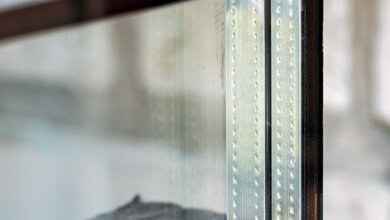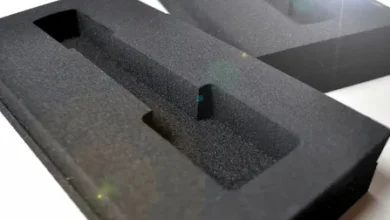What Happens to Your Old Car? Tracing Its Journey Through the Salvage Chain
Introduction
When a car reaches the end of its road life, many people wonder what happens next. Whether it has stopped running, suffered serious damage, or simply aged beyond repair, an old vehicle still holds purpose beyond the driveway. Rather than being forgotten or left to rust, most of these vehicles enter a process known as the salvage chain.
This chain includes steps like collection, inspection, parts removal, recycling, and disposal. Each stage plays a part in ensuring that nothing useful goes to waste. In this blog, we will walk through what happens to old vehicles after they are handed over, how parts are reused, and how this entire process supports the wider automotive ecosystem.
Step 1: The Decision to Let Go
At some point, every car owner must decide whether it is worth holding on to an ageing or damaged vehicle. This decision may follow a mechanical failure, an accident, or just the natural wear and tear from years on the road. Repair costs, safety concerns, or registration issues often lead people to say goodbye to their vehicles.
Some cars are sold privately, while others are handed over to buyers who deal specifically in salvage or scrap. These buyers take on cars in any condition and begin the process of evaluating what can be saved and what must be recycled.
Step 2: Collection and Initial Checks
Once a car is handed over, it is usually transported to a salvage yard or dismantling site. Here, the vehicle undergoes an initial inspection. The goal is to determine which parts are still usable and whether the car can be repaired or only dismantled.
Details like the make, model, year, and overall damage are assessed. Vehicles that have been in accidents may still carry useful components. Others that have aged naturally may have worn-out engines but good body panels, tyres, or interiors.
During this stage, fluids like oil, coolant, and petrol are safely drained. Hazardous materials such as batteries or airbag systems are removed and handled with care to meet safety rules.
Step 3: Parts Recovery and Testing
One of the main reasons old vehicles hold worth is because of their parts. Even if a car can no longer be registered or repaired, many of its components can still be reused. These include alternators, transmissions, lights, doors, mirrors, radiators, and electronics.
Parts are removed by trained workers who understand how to safely extract them without causing further damage. Once removed, these parts are cleaned, sorted, and tested. The working ones are stored for resale, often going to mechanics, workshops, or individual car owners who are trying to keep other vehicles on the road.
In many cases, the demand for parts from older models stays strong because not every driver can or wants to purchase new replacements. https://theglobalnewz.com/cash-for-cars-brisbane-offers-same-day-vehicle-removals/
Step 4: Recycling the Remaining Shell
After all usable parts are removed, the remaining car shell is usually crushed or shredded. This may seem like the end, but even now, the material is far from useless. Cars are made of steel, aluminium, plastic, and other recyclable materials.
These materials are sorted and sent to recycling facilities where they are processed and reused in other industries. For example, steel from car bodies is often melted down and turned into construction materials. This reduces the need for new mining and helps support efforts to cut back on waste.
Step 5: The Wider Impact of Vehicle Salvage
The salvage chain is not only about breaking down vehicles. It also supports jobs and helps keep the automotive industry more balanced. Mechanics, part suppliers, transport workers, and dismantlers all rely on this chain for their daily work.
More importantly, the process supports environmental goals by reducing the amount of waste sent to landfills. According to the Australian Bureau of Statistics, more than 500,000 vehicles reach the end of their road life each year. Through salvage and recycling, a large portion of these are given new purpose in some way.
A Logical Need for Car Sellers
Not every car owner knows where to go or what to do when it is time to part with their vehicle. Some may not have the means or time to arrange for private buyers or auctions. That is where services like buy my car Gold Coast fit in. These services offer a direct way for people to hand over their unwanted vehicles, even if they are not running or damaged. By collecting cars from owners and starting them on their salvage journey, such services make sure these vehicles are used in full — whether through parts recovery or recycling — rather than being left unused.
Step 6: How Buyers Choose What to Salvage
Buyers in the salvage trade are selective. They look at vehicle history, accident details, and market demand for specific parts. Certain makes and models are more sought-after, especially if spare parts are expensive or rare.
Sometimes buyers purchase whole fleets of older vehicles from businesses or councils. These vehicles are usually well documented, and many parts are still usable. Buying in bulk allows them to stock parts that others may need in the near future.
Step 7: Final Disposal of Waste
Not every part of a vehicle can be reused or recycled. Materials like rubber trims, old upholstery, or non-recyclable plastics often end up as waste. These are disposed of following government regulations to prevent harm to the environment.
Some modern yards have systems in place to reduce their landfill output even more. They may break down materials further or work with partners who handle complex waste items.
Conclusion
The end of a car’s road life is not the end of its purpose. Through a structured salvage chain, old and damaged vehicles can still serve many uses. From spare parts to scrap metal, almost every section of a car has potential if handled the right way.
This process supports workers, helps car owners maintain their vehicles, and cuts down on environmental damage. It also ensures that no car is truly wasted — only transformed. The next time you see a car being towed away, know that its journey is not over. It is simply moving into a new phase that helps keep the wheels of the auto world turning.




